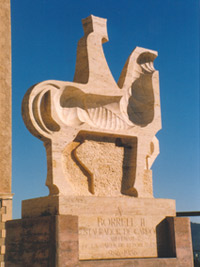
Long-time readers of this blog will maybe have noticed that I’ve had a long journey with regards to what the discipline classifies as ‘theory’, which is probably to say, any use of terms outside our evidence to explain it. When I started writing for the Internet I was basically hostile to such approaches, which got me into a certain amount of argument. That argument however, because it was with people I respected and of whose work and findings I could often see the point, and finding some such work that did something useful for me, got me looking for more such work. This also entailed me becoming more ready to admit that, of course, we all carry round interpretative models as a result of our education and that in many ways an explicitly theorised approach may be more intellectually rigorous than one which doesn’t recognise a source for its ideas. (Mine seem largely to be Marx, tempered also with Foucault and Bourdieu, all of which I acquired second-hand but whose effect on my thinking I can’t deny even so.) By now, I am not only ready to admit that there is a lot of useful ‘theoretical’ work out there, even if amid a sea of stuff that serves no purpose other than to badge its producers as belonging to a group, but to complain that we need more theory and even, tentatively, to start trying to work it out.
It was in more or less this case that I had one of several avid conversations early last year on such matters with an archæologist, who would not thank me for naming them. I had at that point just read a piece by Chris Scull which struck me as being an excellent case of the adaptation of theories: it tries to understand the formation of kingdoms in southern Anglo-Saxon England in terms of systems theory, finds that inadequate and modifies it with some ideas on peer-polity interaction to produce a result that seems to me to make sense.1 It is, however, an explicitly processual appproach, which we are of course supposed to be over now, and so I perhaps shouldn’t have been surprised at said archæologist’s reaction, which was basically to tell me the approach was too old to be valid.
Now, perhaps I’m just a historian and thus automatically interested in the idea that knowledge of the past can inform the present but that didn’t seem to me to be a priori true. Surely an idea is an idea is an idea however old it is, and while the context in which it was generated will be important to it a good one might still be transportable. Further argument about this established that said archæologist believed that processual models were to be discarded because they had often been proved to be wrong by later work, which perhaps simply exposes my vulnerability here: since we will, really, never know how kingdoms actually formed in southern England in the sixth century, by finding Scull’s version plausible all I’m really doing is stating a preference in the secure knowledge that it doesn’t matter a damn one way or another. The archæologist’s position here was implicitly founded on the axiom that there is actually a right answer, about which the historical discipline can waver towards the agnostic to say the least, but in this case that right answer is probably beyond recovery, making all guesses much more equivalent in worth. But even if the archæologist here wasn’t doing it, there are others out there who think that novelty is sometimes too important a factor in interpretation.
Now, this is a thing to which medieval historians seem especially vulnerable. I have taught on methods courses where nothing published in the last twenty years was involved except from the literature side. Marx is still a big force on us (and rightly so, in my view; even if we don’t like his answers any more, he asked the right questions). Our anthropologists of resort are still Clifford Geertz and Pierre Bourdieu, where they’re not E. E. Evans-Pritchard or even James Frazer (a situation to which an anthropologist I used to be attached to reacted with the words, “Oh, it makes the Baby Jesus cry!”). And where frontiers come under discussion, the name of Frederick Jackson Turner still gets invoked, bewildering any Americanists we know, they having forgotten the man years ago. We are awfully outmoded. But it is a question at least partly of ‘mode’, in the French sense, I think, not utility, because the reason we keep these tools around is because they are useful to us. The reasons for that use may often be somewhat ugly and political, but one could be cynical and say that so is our work, again whether we realise it or not.
So I suppose this is one of those posts where rather than having opinions of my own, I’m interested in yours. The unnamed archæologist’s critique of Scull’s piece is as close as I’ve so far met to an argument against ‘old’ theory that wasn’t fundamentally about fashion-currency: when its results are found wrong old theory must be deprecated. Fair enough, except that as I say, just because Communism failed and the working-class revolution seems further away than ever doesn’t mean that it’s not important to ask who controls the means of production, does it? Do you feel guilty whenever you cite Bourdieu or Geertz for knowing they’re dead and that you’re ignoring two generations of subsequent work by people presumably as brilliant? Or will those tools still serve, and if so for what? Are our enquiries themselves two generations out of date, and is that a problem if so? What do you think about what you think?
1 C. Scull, “Social Archaeology and Anglo-Saxon Kingdom Origins” in Tania Dickinson & David Griffiths (edd.), The Making of Kingdoms. Papers from the 47th Sachsensymposium, York, September 1996, Anglo-Saxon Studies in Archaeology and History 10 (Oxford 1999), pp. 17-24.


















